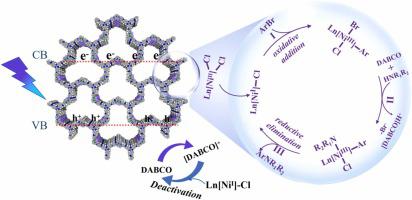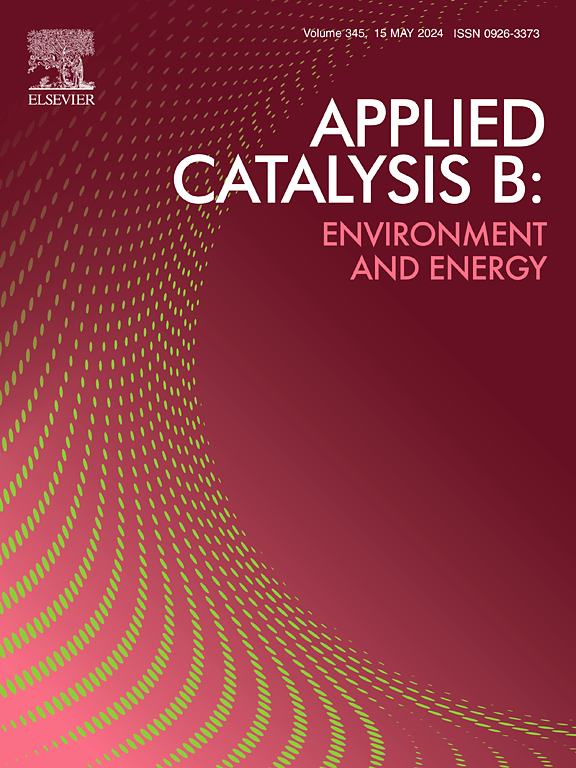Atomically dispersed Ni active sites on covalent organic frameworks for heterogeneous metallaphotocatalytic C–N cross-coupling
Abstract
Covalent organic frameworks (COFs) have been acknowledged as a potential platform for heterogeneous photoredox cross-coupling due to their excellent chemical stability, admirable controllability, and extremely prominent surface area. However, synthesizing COFs with bidentate ligand units and utilizing active sites remain a grand challenge. Herein, we report a promising new family of 2,6-pyridinedicarboxaldehyde-bis-(p-aminophenylimine)-based two-dimensional (2D) COFs (PP-COF) using an amine monomer and classic tri-aldehydes. On this basis, dispersed Ni single-atom sites were immobilized on three-types imine-based bi-coordinated 2D COFs (Ni SAS-PP-COF) as heterogeneous dual photoredox catalysts for photo/Ni dual-catalyzed C–N cross-coupling between aryl bromides and alkyl/sulfo amines. Under solar energy irradiation, PP-COF could absorb light to generate electrons and holes, then the photogenerated electrons are transferred to Ni sites to reduce divalent nickel to monovalent nickel. Monovalent nickel is necessary to drive the nickel catalytic cycle. Due to the increased charge separation and abundant active sites, the state-of-the-art Ni SAS-PP-COFs catalyst achieves excellent catalytic performance in comparison of pristine PP-COF. The heterogeneous Ni SAS-PP-COF catalytic system not only confirms the prospect of COFs as potential photoredox/transition-metal dual catalysts, but also provides in-depth insights into the synthesis of functional COFs toward practical metallaphotocatalytic application.


 求助内容:
求助内容: 应助结果提醒方式:
应助结果提醒方式:


